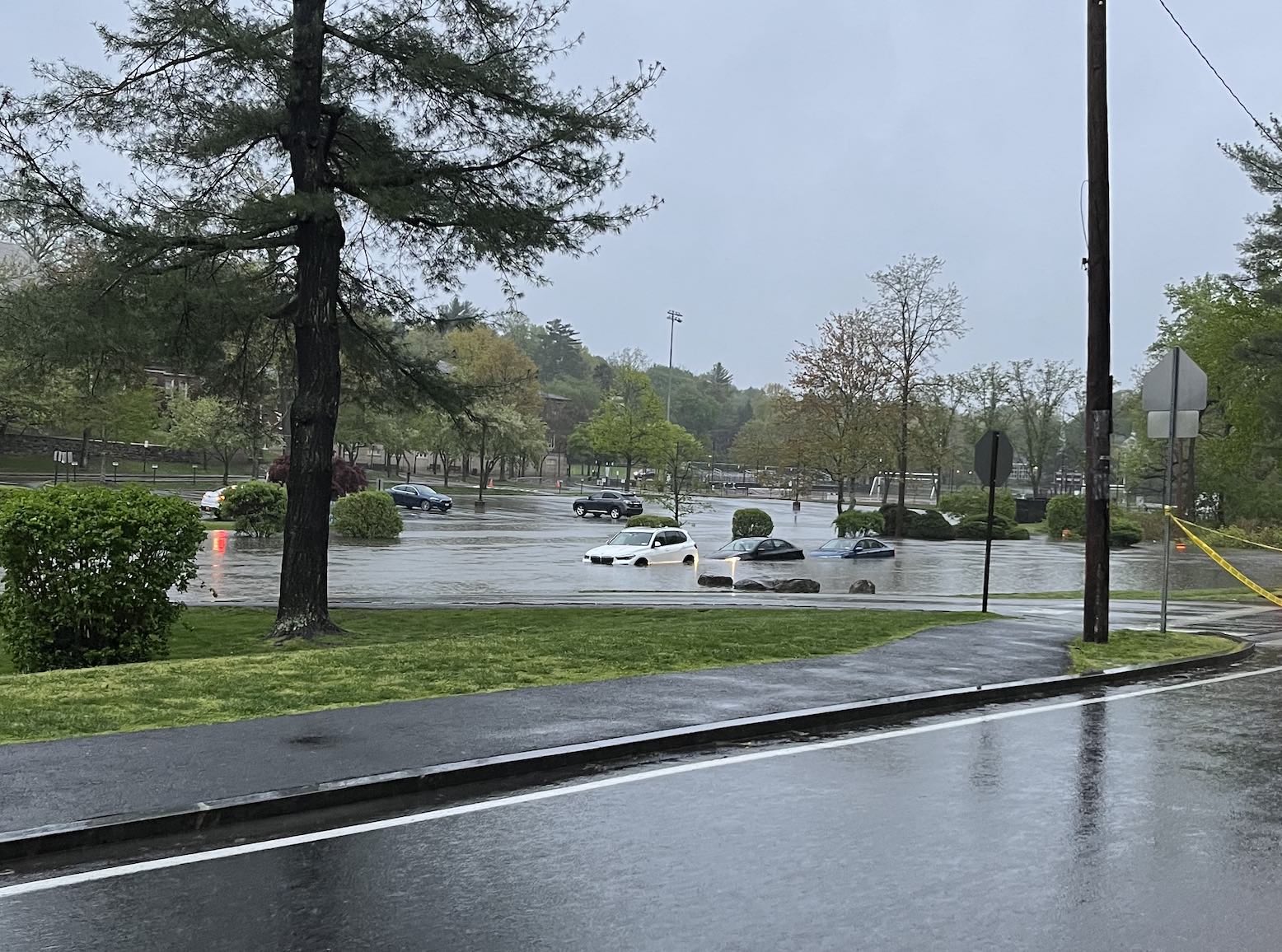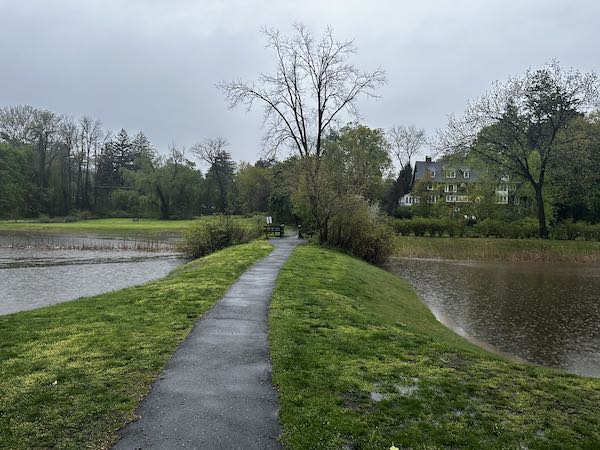Scarsdale Police Alert Residents About An Increase in Burglaries
- Details
- Written by Joanne Wallenstein
- Category: The Goods
 Scarsdale Police are seeing in uptick in burglaries this year. They report that year to date there have been 14 burglaries, as compared to four at this time last year.
Scarsdale Police are seeing in uptick in burglaries this year. They report that year to date there have been 14 burglaries, as compared to four at this time last year.
They are offering residents the following tips to avoid becoming a victim:
Automobile Theft Prevention
1. Lock your vehicle doors and remove your keys and key fobs from inside your vehicle.
2. Secure your garage door opener in a locked glovebox, as thieves may use it to enter your home to retrieve your vehicle key or steal other valuables.
3. Never leave valuables inside your vehicle, particularly if visible.
Burglary Prevention
1. Keep all exterior doors at your residence locked, using deadbolt locks. Also, keep your garage door closed and locked, including your interior access door, and lock all widows, including second floor.
2. Always turn your alarm system on when you are away. It is also recommended to have your alarm system in the “stay” or “home” mode when you are home, especially while you are sleeping.
3. Use motion sensing exterior lighting and keep the perimeter of your home well lit.
4. Never leave your house key under doormats or in “hiding” places outside of your home.
5. Make your home appear occupied. Leave lights or televisions on timers when you are out for the evening.
6. Consider the use of a video surveillance system to protect your property.
7. If your residence will be vacant for an extended period, consider signing up for the Scarsdale Police Department’s “Dark House Program” by calling 914.722.1200. The program is free, and officers will make periodic checks of the house, depending on call volume and officer availability, until the homeowner returns.
Submerged in the Deluge
- Details
- Written by Joanne Wallenstein
- Category: The Goods
 Cars submerged in the drinking lot on Brewster Road April 30: Photo Credit Emily GilmanSevere rainstorms deluged Scarsdale on Saturday and Sunday April 29 and 20, closing roads and submerging cars.
Cars submerged in the drinking lot on Brewster Road April 30: Photo Credit Emily GilmanSevere rainstorms deluged Scarsdale on Saturday and Sunday April 29 and 20, closing roads and submerging cars.
At Scarsdale High School, the school was hosting in the NYS Speech and Debate Tournament on Sunday April 30 and three cars parked in what is known as “the drinking lot” were engulfed in deep water when the parking lot flooded. See below for photos of the cars on the night of April 30 and on the morning of May 1 when two of the cars were still drying out.
The Bronx River Parkway flooded under the bridge at Fenimore Road and was closed and remained under water on Monday May 1, 2023.
George Field Park, a seven acre retention basin that is designed to catch and release flood water, did its job. See below for photos of the park filled with water on the night of April 30 – and back to normal on May 1, 2023. But even Westchester’s largest retention pond did not help to prevent flooding on the adjacent street, Greendale Road, that was closed after it was submerged as well.
 Cars drying out on May 1.
Cars drying out on May 1.
Stormwater management continues to be an issue in parts of the Village that are in the flood plain.
 The retention pond at George Field Park on Sunday April 30. Photo: Michelle Lichtenberg
The retention pond at George Field Park on Sunday April 30. Photo: Michelle Lichtenberg The seven acre field did what it was supposed to do: Photo Michelle Lichtenberg
The seven acre field did what it was supposed to do: Photo Michelle Lichtenberg By the next morning, the water drained away, leaving the park back to normal.
By the next morning, the water drained away, leaving the park back to normal. The Bronx River Parkway flooded on April 30 and remained closed on May 1.
The Bronx River Parkway flooded on April 30 and remained closed on May 1. The storm left debris along the Bronx River Parkway pedestrian path: Photo Frank Lichtenberg
The storm left debris along the Bronx River Parkway pedestrian path: Photo Frank Lichtenberg
What the Heck is Happening to My Body: Answers to Your Most Sensitive Questions
- Details
- Written by Joanne Wallenstein
- Category: The Goods
 Ever have that moment where you just think “What the heck is happening to my body?!” Well, you are not alone! Here is your chance to ask your questions and get some answers!
Ever have that moment where you just think “What the heck is happening to my body?!” Well, you are not alone! Here is your chance to ask your questions and get some answers!
On Thursday, April 27th, White Plains Hospital is hosting “What the Heck is Happening to My Body?!” a candid conversation with female health experts for women in their 30s, 40s, 50s, and 60s. This dynamic event will be held from 9:00-11:30 am at Quaker Ridge Golf Club. No topic will be off limits! Come alone or with friends.
The panel discussion will be moderated by White Plains Hospital Foundation Board Vice Chair, Dara Gruenberg, and will provide women with a chance to learn more about the changes and challenges they may face as they age and get answers to the questions we may ask in the privacy of our homes or with our girlfriends. Individuals will have the opportunity to pre-submit questions anonymously to the six panelists who specialize in endocrinology, sexual health, gynecology, dermatology and nutrition.
Some of the topics that will be discussed are:
- How your body changes and what to expect in your 30s, 40s,50s and 60s
- Perimenopausal impacts on hair, skin, brain function, sex drive, and wellbeing
- Sexual health
- Metabolism and fatigue
- Health risk factors as you age
- How to help reverse the effects of aging through medicine and diet
To register and learn more, click here. Profits will go towards funding mammograms for uninsured and underfunded women in the larger Westchester community.
How We Can Help Abusers and Victims of Domestic Violence
- Details
- Written by Wendy MacMillan
- Category: The Goods

When we hear about a person who is stuck in an abusive relationship, we often wonder, “Why does the victim stay with the abuser?” But Rachel Louise Snyder, author of No Visible Bruises: What We Don’t Know About Domestic Violence Can Kill Us, challenges her readers to ask instead, “Why do abusers abuse?” This is only one of the poignant questions that Louise Snyder poses in her book, in which she thoughtfully explores the often taboo subject of domestic violence. By highlighting the perspectives and stories of both the victims and the perpetrators of domestic violence, the author brings the subject out of the shadows and lays a foundation for communities to move towards successful solutions for what the World Health Organization describes as “a global health problem of epidemic proportions.”
On Tuesday April 17th, the Scarsdale Public Library and Scarsdale Edgemont Family Counseling’s Safe Coalition hosted a virtual author talk with Ms. Louise Snyder to learn more about her book and its important message. New York State Assemblymember Amy Paulin opened the program by introducing both the author, Rachel Louise Snyder and the moderator of the discussion Darlene Reda, the deputy director for the Westchester County Office for Women.
Throughout the hour-long discussion, Reda and Snyder touched on many of the significant points that the author elucidates in No Visible Bruises. A natural storyteller, Snyder first recalled how she was inspired to write her latest book after a chance meeting with a domestic violence worker left her feeling compelled to help spread awareness. She bemoaned that so little attention is given to an issue that endangers an estimated 10 million people every year and almost one in four women. Snyder argues that because women make up the large majority of domestic abuse victims, the issue does not get the attention it deserves.
The author also made clear that victims stay with their abusers for a variety of reasons, but chief among them is our broken system of support for the victims. As she explains, we often put the impetus to change onto the victims of domestic violence telling them to move out, go to a shelter, or get counseling. But we don’t do this with other crimes. For instance, we don’t suggest that a homeowner move out of their home after a burglar breaks in, we don’t tell a victim of a robbery to stop carrying a purse, or a victim of a hit and run to stop driving a car. Snyder wonders why then, do we put the catalyst for change primarily on the shoulders of the victims of domestic violence?
She described reasons that it can be difficult for victims to move out and go to a shelter.
Primarily, moving is just plain difficult but moving to a shelter where there is little privacy and lots of other traumatized victims can seem even less appealing. Victims with children also have to consider that they can’t register children in another school district without the consent of both parents and that pulling children away from their sports and activities creates more chaos and trauma.
Louise Snyder further described how the victims in her book, also experienced coercive and financial control by their abusers and were isolated from their friends and family and left without access to any money, making moving away a near impossibility. The author made clear that most victims of domestic violence experience this kind of coercive control, an invisible form of emotional abuse that results in psychological trauma. She also noted that in many of these relationships, the victims truly love and care for their abuser and don’t want anything bad to happen to them; they just want the trauma to stop.
On the topic of how to help victims of abuse, Reda and Snyder agreed that a victim will not leave an abuser until THEY are ready to leave and described how ending an abusive relationship is not an event, it's a process. Snyder recounted the story of a victim who made seven or eight attempts to leave. The day she finally tiptoed her way to freedom, was years in the making.
Since leaving an abuser is a long process, the author stresses the importance of maintaining an open and nonjudgmental line of communication with victims and letting them know you are always there for them. Rather than getting frustrated with a victim for not leaving, she suggests we should instead help the victim plan for the day they do decide to end their abusive relationship. As supporters we can encourage victims to have things like a “safety plan”, a “go bag”, and a list of important contact numbers. Because victims are often isolated from friends and family, Louise Snyder believes that we should also enlist the help of local clergy, human resource personnel from businesses, and social workers at schools and suggests we train these resources to better support victims of domestic abuse.
Another important aspect of the book is her inclusion of the abusers’ stories and their perspectives. She reminds her readers that perpetrators of violence are not always monsters but rather complicated humans: people we might know in our ordinary lives who struggle with feelings of rage and anger but are not the sum total of their abuse. She went on to discuss various ways we can better support abusers in their quests for rehabilitation and help to prevent acts of violence before they happen. One program the author described is an anonymous hotline for abusers to call if they feel like they might get violent. The hotline disrupts a moment of violence and allows callers to take a time out, calm down, maybe get their medication and formulate a plan before ending the phone call. Another program lauded by the author is a shelter for the abuser and not the victim. Instead of removing the victim from the home, or sending the abuser to jail, Louise Snyder described a program that provides temporary shelter for abusers, where they receive intense counseling and support while still being allowed to go to work and have supervised visits with their families.
While these are only some of the highlights of the discussion, in her book No Visible Bruises: What We Don’t Know About Domestic Violence Can Kill Us, Rachel Louise Snyder provides her readers with an eye-opening and thought-provoking narrative of what domestic violence looks like and how communities can better effect change.
Copies of the book are available at the Scarsdale Public Library. For more information about domestic violence or if you are someone you know is in need of support please see the Safe Coalition's website for a list of resources.
Raiders Name In Question
- Details
- Written by Joanne Wallenstein
- Category: The Goods
 Another Scarsdale tradition may soon become history. At the meeting of the Scarsdale School Board on Monday night March 27, Superintendent Drew Patrick made a sobering announcement. The New York State Board of Regents is expected to approve a ban on the use of indigenous names, logos, imagery or mascots at public schools.
Another Scarsdale tradition may soon become history. At the meeting of the Scarsdale School Board on Monday night March 27, Superintendent Drew Patrick made a sobering announcement. The New York State Board of Regents is expected to approve a ban on the use of indigenous names, logos, imagery or mascots at public schools.
Under the new regulations, the Board of Education would be required to adopt a resolution omitting the use of indigenous names, mascots or logos to be phased out no later than the end of the 2024 school year.
At a recent BOCES meeting, the Senior Deputy Commissioner of Education left no doubt that Scarsdale would need to adapt when he specifically named the words “warriors, raiders and red raiders,” as examples of names that would be prohibited under the new regulations.
Curiously, the dictionary definition of the word “raider” has no mention or connection to indigenous tribes – and reads as follows:
Raider (definition)
-a person or thing that raids.
-a commando, ranger, or the like, specially trained to participate in military raids.
-a light, fast warship, aircraft, etc., used in such a raid.
-a person who seizes control of a company, as by secretly buying stock and gathering proxies.
-Informal. a person who works within an organization for the purpose of gathering evidence of wrongdoing.
But nonetheless, if the move is approved by the Board of Regents, “The Raiders,” would need to be changed.
Patrick said “It would be prudent to contemplate an alternative. While we monitor this, I have reached out to Athletic Director Ray Pappalardi and the leadership of Maroon and White.” He indicated that he would like the process of defining a new name to be an inclusive one with students and alumni. He said that a discussion of the name would be scheduled at an upcoming meeting of the Board of Education.
So make sure to hold on to any Raider's swag in your house - it could soon become a collector's item.
And if you have ideas for an alternative name, enter it in the comments section below:














